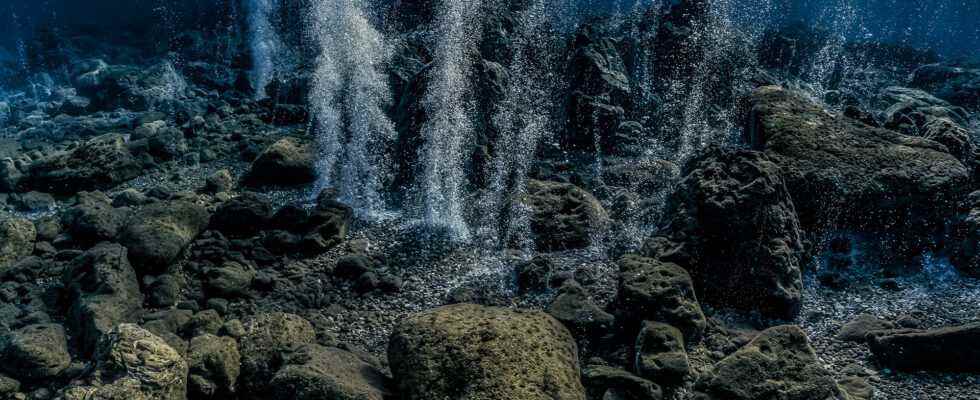These are rare documents provided to us by Alexis Rosenfeld. The French photographer, who has collaborated on many occasions with “Paris Match”, went to rub shoulders with the underwater volcanoes which are unleashed in the depths of the Tyrrhenian Sea. Objective: to learn more about the origin of life on Earth and prevent tsunamis. The searches occurred in Sicily, specifically off the island of Panarea.
With the UNESCO team “1 Ocean, the great testimony on the Ocean”, the great specialist in scuba diving descended to more than 70 meters deep to approach the volcanic chimneys which spit gas and hot fluids. “It’s a breathtaking atmosphere, where we are both enveloped by the infinite silence of the ocean and witness to this Dantesque spectacle, a bit as if we were at the gates of hell. We then understand that the Earth is alive. From the surface, you don’t suspect a thing. But, in fact, we are literally above a bomb”, he confided to us.
Only a few meters deep, permanent gas eruptions coming directly from the volcano’s magma chamber escape from the bowels of the Earth to form impressive curtains of bubbles. Some areas release more than a million liters of gas per day. An “exceptional” site was recently discovered during a scientific mission by the National Institute of Geophysics and Volcanology (INGV): “The smoking Land”. The many hydrothermal vents there expel acidic fluids at high temperatures. “1 Ocean divers can only work at such depths using special breathing systems that allow them to explore the seabed for several hours,” the mission’s rapporteurs explain in a statement.
The risk of a tsunami in the Mediterranean
Volcanologist Francesco Italiano observed that the seabed of the Panarea caldera was dotted with white spots that are usually found at the base of gas columns. These stains are actually clumps of bacteria that feed primarily on carbon. They are the first link in the food chain, the basis of terrestrial ecosystems. “Panarea is a unique place. It is a natural laboratory where many different scientific disciplines can meet and work together,” he said. With the National Institute of Nuclear Physics (INFN) and the National Research Center (CNR), Francesco Italiano and other INGV researchers are in the process of creating a multidisciplinary scientific reception and sharing platform whose objective is to collect and centralize a multitude of data continuously in Sicily.
The exploration mission also aimed to respond to one of the first issues around volcanism in Sicily: the possibility that an eruption could generate a large-scale tsunami which would represent a major risk for the populations of the region. “One of the risks is the possibility of a tsunami. The main problem in coping with this risk is the short distance between the islands. A tsunami moves at very high speed, at least 300 km/h. A tsunami can therefore reach one of the islands in just a few minutes,” added the Italian scientist. Faced with this eventuality, UNESCO is working on a training program for coastal populations. It will announce its new global objective in this area on the occasion of the United Nations Conference on the Oceans, scheduled for June 27 to July 1 in Lisbon, which will focus in particular on the Mediterranean rim.
